Carolyn Cole’s Pulitzer-nominated work

People flee downtown Nairobi as riot police chase protesters from the streets. (Carolyn Cole / Los Angeles Times)

In the Kibera slum of Nairobi, protesters turn over a section of railroad tracks after breaking the ties. Some of the male residents had spent the day damaging the tracks that lead from Nairobi to Uganda. They said they didn’t want President Kibaki to use the railroad to transport Ugandan troops to fight against them. Police responded by opening fire and killing at least six people in one of the bloodiest days of the ongoing protests. (Carolyn Cole / Los Angeles Times)

Armed with machetes and rocks, Odinga supporters face off with their opponents before being chased away by the army. The heavy police and military presence throughout the city also broke up ethnic fighting in the slums. (Carolyn Cole / Los Angeles Times)

A group of men carry a severely injured man who was shot in the neck and back by police in Kibera. (Carolyn Cole / Los Angeles Times)
Advertisement

Residents mourn over the bodies of a woman and a man who were among the dead after police opened fire on protesters. (Carolyn Cole / Los Angeles Times)

A Kenyan protester launches a rock at police in the Kibera neighborhood of Nairobi, where clashes between supporters of opposition leader Raila Odinga and police went on for most of the day. (Carolyn Cole / Los Angeles Times)

Police with clubs surround a man in the Kibera neighborhood, where they had gone in search of agitators. He was released after being roughed up. On the second day of a nationwide protest rally against President Mwai Kibaki’s administration, violence broke out in the slums of Nairobi and in the downtown business district. (Carolyn Cole / Los Angeles Times)
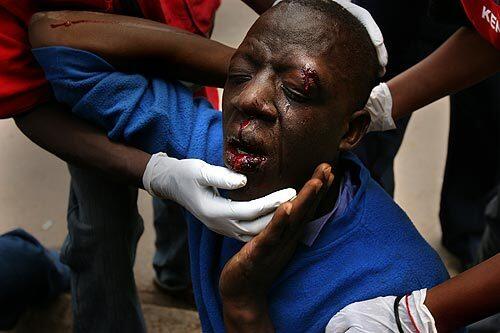
A man severley beaten in ethnic violence in the Mathare district of Nairobi is helped by Red Cross workers before being taken to the hospital. (Carolyn Cole / Los Angeles Times)
Advertisement
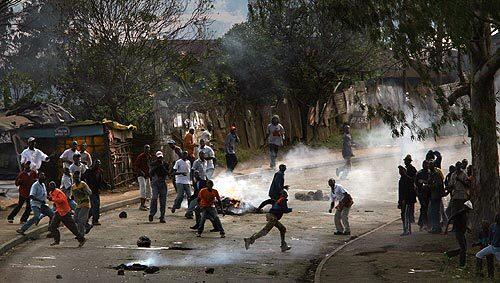
Riot police use tear gas and bullets to disperse people in the Kibera slum. (Carolyn Cole / Los Angeles Times)
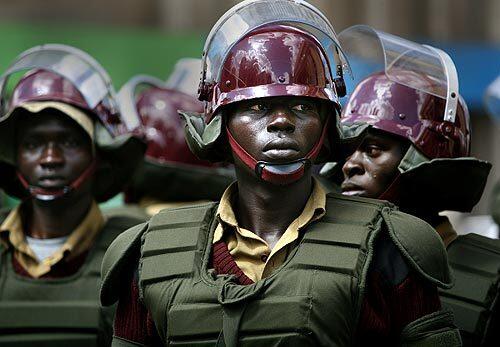
Kenyan riot police stand ready in Nairobi. (Carolyn Cole / Los Angeles Times)
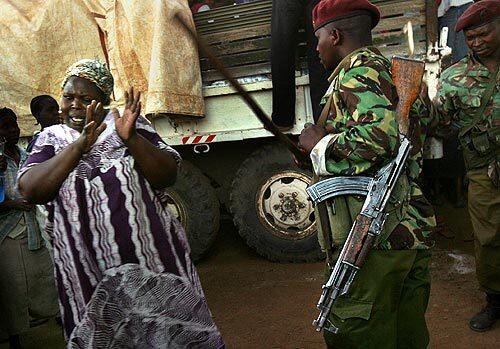
A woman cowers as a paramilitary police officer uses a stick to get her to move. (Carolyn Cole / Los Angeles Times)
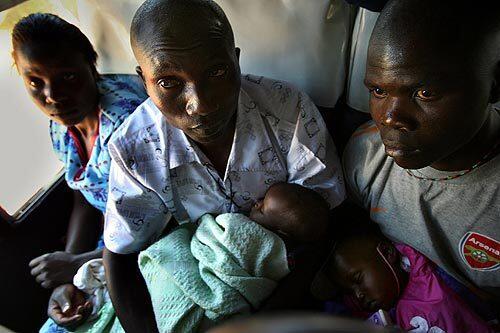
In Tigoni, Morris Nyamonde, center, and relatives ride a bus headed north. They fled their hometown and don’t know when they’ll be able to return. (Carolyn Cole / Los Angeles Times)
Advertisement
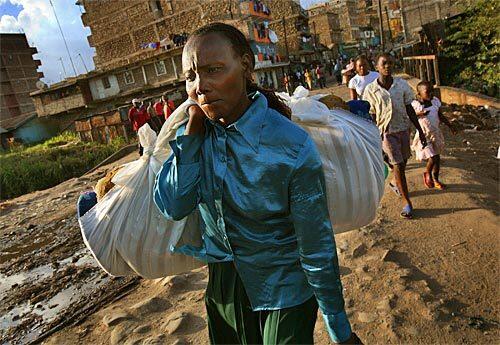
Charity Wanjiru, 30, carries her belongings across a bridge that divides tribes in the area. She is relocating her family, including her four children. (Carolyn Cole / Los Angeles Times)
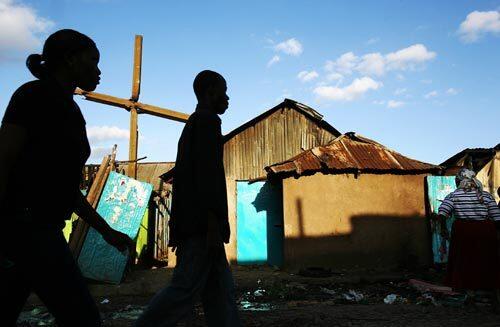
The Humura neighborhood was the site of much violence, including a machete attack on Dishon Omondi, the Luo tribesman who suffered a 4-inch slash to his skull. (Carolyn Cole / Los Angeles Times)

A crowd reaches for food aid on Jan. 6 from a Red Cross distribution truck in the Mathare slum of Nairobi. (Carolyn Cole / Los Angeles Times)

At the Katata coffee farm, men have taken up arms and begun all-night patrols to protect their village. (Carolyn Cole / Los Angeles Times)
Advertisement

Rosemary Nafula, 12, carrries her baby brother near a burned home in Katata. (Carolyn Cole / Los Angeles Times)

Parishioners pray in a partly burned Lutheran church in Kibera, another of Nairobi’s slums, where severe food shortages have fueled instability after last month’s elections. (Carolyn Cole / Los Angeles Times)






